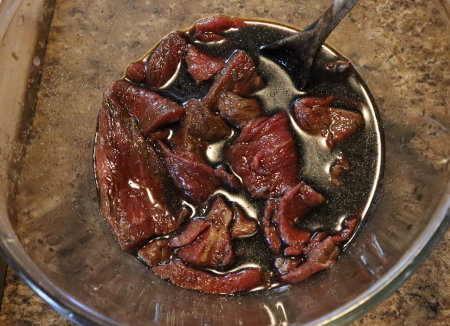I mentioned mending on
my winter project list. It's an ongoing job (our lifestyle is hard on clothes), and a good task for
when the weather is too cold or rainy to do outside things. It has a utilitarian nature and so tends to be tedious, but I prefer the mindset of longevity through
repair rather than buy, buy, buy. Plus, I like hand sewing.
When I discovered "visible mending," I was delighted to realize I can put a
creative twist on a mundane chore, because it transforms a potentially boring
task into something fun and interesting. Like when I mended my barn gloves, I used variegated embroidery thread and enjoyed the plaid-like patterns it
made. Another example, when I hang laundry on the line to dry, I like to hang
items in a color pattern, like a rainbow. The challenge is, can I do it? I
try, for no other reason than it amuses me during an otherwise tedious job.
Two of the visible mending techniques I've discovered in exploring YouTube
videos are boro and sashiko. These Japanese techniques are currently very
popular with the needlework crowd, so if you're a stitcher, you're probably
familiar with them. As a longtime embroiderer and patchwork quilter, they appeal to me
immensely. I was curious to understand them better and started exploring
videos.
The best of these videos are by Atsushi Futatsuya. He is a native Japanese from a sashiko family, who lives and teaches sashiko
in New York. He's the most authoritative source I've found. He has a YouTube channel, 刺し子 物語 & Sashiko Story, and website,
Upcycle Stitches.
From Atsushi's "Sashiko Story" video series, I learned not only about the
tools and techniques of boro and sashiko, but was also introduced to the Japanese cultural significance and identity of these skills.

|
|
Public domain image of late 19th century child's boro sleeping mat |
Everything that follows below are the beginnings of my understanding.

|
|
Here's a close-up of the above |
Boro could be translated as "tatters" and describes the overall
patchwork look of boro textile repair.

|
| Another close-up |
Sashiko means "little stabs," which describes the running stitch used to
hold the layers of fabric together. Originally, the stitching served
to strengthen and reinforce the fabric (like quilting).

|
| And another |
Fast forward to today, and we see boro and sashiko are still mending techniques that have became more focused on the decorative aspect. They have
become an art form in their own right.
Even so, the precise origin of these crafts is vague, so there is a lot of
speculation and opinion out there. Most sources agree it likely developed in
rural Japan, at a time when fabric was expensive to buy. That meant fabric was scarce and valuable. It was used
and reused out of necessity.
This kind of necessity is foreign to us moderns because fabric and clothing
are now cheap and readily available. I buy almost all of Dan's and my
clothing off the dollar rack at thrift stores. Much of it is never or
barely worn! I buy a lot of fabrics at thrift stores too, and because these
are so abundant and so cheap, it almost seems to make mending and clothing
repair obsolete. Just cut up the old stuff for rags and use them instead of
paper towels.
From many of the videos I've watched, however, I'm seeing a shift of motive toward environmental responsibility. The clothing industry is excessively wasteful and fueled by fads. Mending, repairing, re-using, and repurposing are ways the consumer can make a difference. And if the process can be
creative and fun, so much the better! Hence the popularity of visible
mending.
Besides the cultural importance, what distinguishes sashiko from other forms of needlework?
-
Patterns are built with running stitches, which are stacked on the needle before pulling it through the fabric.
- Traditionally, special needles, thread, and thimbles are used.
-
Sashiko thread is spun to make it sturdier for repair and longer-wearing than embroidery
thread.
-
Needles are sharps and long enough to pick up several stitches before
pulling through the fabric.
-
Needle eyes are narrow but long enough to accommodate multi-strand thread.
-
Thimble is a ring aka palm thimble. It's worn like a ring with a metal plate
or leather flap on the palm side of the hand. It's used to push the needle
through the many layers of fabric.
- Traditional color is indigo blue, although nowadays, anything goes.
Bibliography:
Okay, so now that I have my notes and links where I can find them again, I'll close this post with a link to what I've been working on → Winter Mending Project: Barn Jacket.


















































